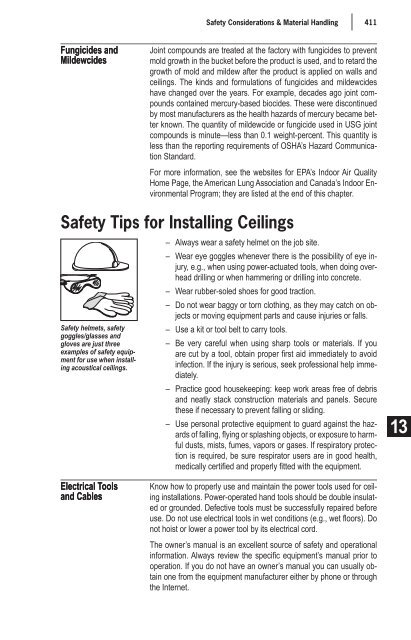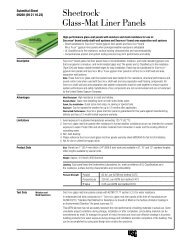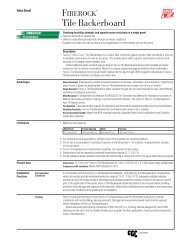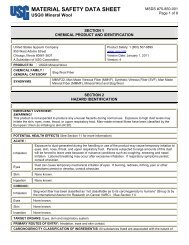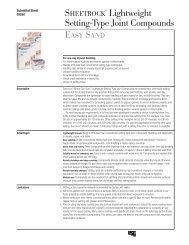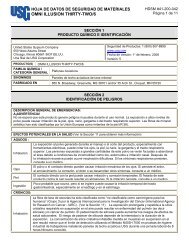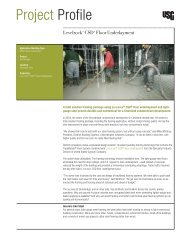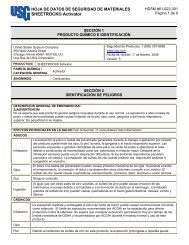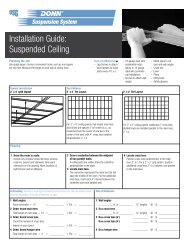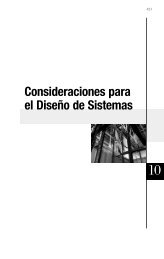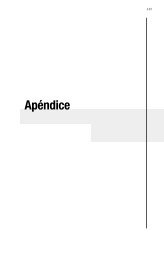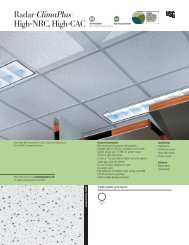13 Safety Considerations & Material Handling - USG Corporation
13 Safety Considerations & Material Handling - USG Corporation
13 Safety Considerations & Material Handling - USG Corporation
You also want an ePaper? Increase the reach of your titles
YUMPU automatically turns print PDFs into web optimized ePapers that Google loves.
Fungicides and<br />
Mildewcides<br />
<strong>Safety</strong> <strong>Considerations</strong> & <strong>Material</strong> <strong>Handling</strong> | 411<br />
Joint compounds are treated at the factory with fungicides to prevent<br />
mold growth in the bucket before the product is used, and to retard the<br />
growth of mold and mildew after the product is applied on walls and<br />
ceilings. The kinds and formulations of fungicides and mildewcides<br />
have changed over the years. For example, decades ago joint compounds<br />
contained mercury-based biocides. These were discontinued<br />
by most manufacturers as the health hazards of mercury became better<br />
known. The quantity of mildewcide or fungicide used in <strong>USG</strong> joint<br />
compounds is minute—less than 0.1 weight-percent. This quantity is<br />
less than the reporting requirements of OSHA’s Hazard Communication<br />
Standard.<br />
For more information, see the websites for EPA’s Indoor Air Quality<br />
Home Page, the American Lung Association and Canada’s Indoor Environmental<br />
Program; they are listed at the end of this chapter.<br />
<strong>Safety</strong> Tips for Installing Ceilings<br />
<strong>Safety</strong> helmets, safety<br />
goggles/glasses and<br />
gloves are just three<br />
examples of safety equipment<br />
for use when installing<br />
acoustical ceilings.<br />
Electrical Tools<br />
and Cables<br />
– Always wear a safety helmet on the job site.<br />
– Wear eye goggles whenever there is the possibility of eye injury,<br />
e.g., when using power-actuated tools, when doing overhead<br />
drilling or when hammering or drilling into concrete.<br />
– Wear rubber-soled shoes for good traction.<br />
– Do not wear baggy or torn clothing, as they may catch on objects<br />
or moving equipment parts and cause injuries or falls.<br />
– Use a kit or tool belt to carry tools.<br />
– Be very careful when using sharp tools or materials. If you<br />
are cut by a tool, obtain proper first aid immediately to avoid<br />
infection. If the injury is serious, seek professional help immediately.<br />
– Practice good housekeeping: keep work areas free of debris<br />
and neatly stack construction materials and panels. Secure<br />
these if necessary to prevent falling or sliding.<br />
– Use personal protective equipment to guard against the hazards<br />
of falling, flying or splashing objects, or exposure to harmful<br />
dusts, mists, fumes, vapors or gases. If respiratory protection<br />
is required, be sure respirator users are in good health,<br />
medically certified and properly fitted with the equipment.<br />
Know how to properly use and maintain the power tools used for ceiling<br />
installations. Power-operated hand tools should be double insulated<br />
or grounded. Defective tools must be successfully repaired before<br />
use. Do not use electrical tools in wet conditions (e.g., wet floors). Do<br />
not hoist or lower a power tool by its electrical cord.<br />
The owner’s manual is an excellent source of safety and operational<br />
information. Always review the specific equipment’s manual prior to<br />
operation. If you do not have an owner’s manual you can usually obtain<br />
one from the equipment manufacturer either by phone or through<br />
the Internet.<br />
chapter<strong>13</strong>.indd 411 1/<strong>13</strong>/2009 10:36:32 AM<br />
<strong>13</strong>


